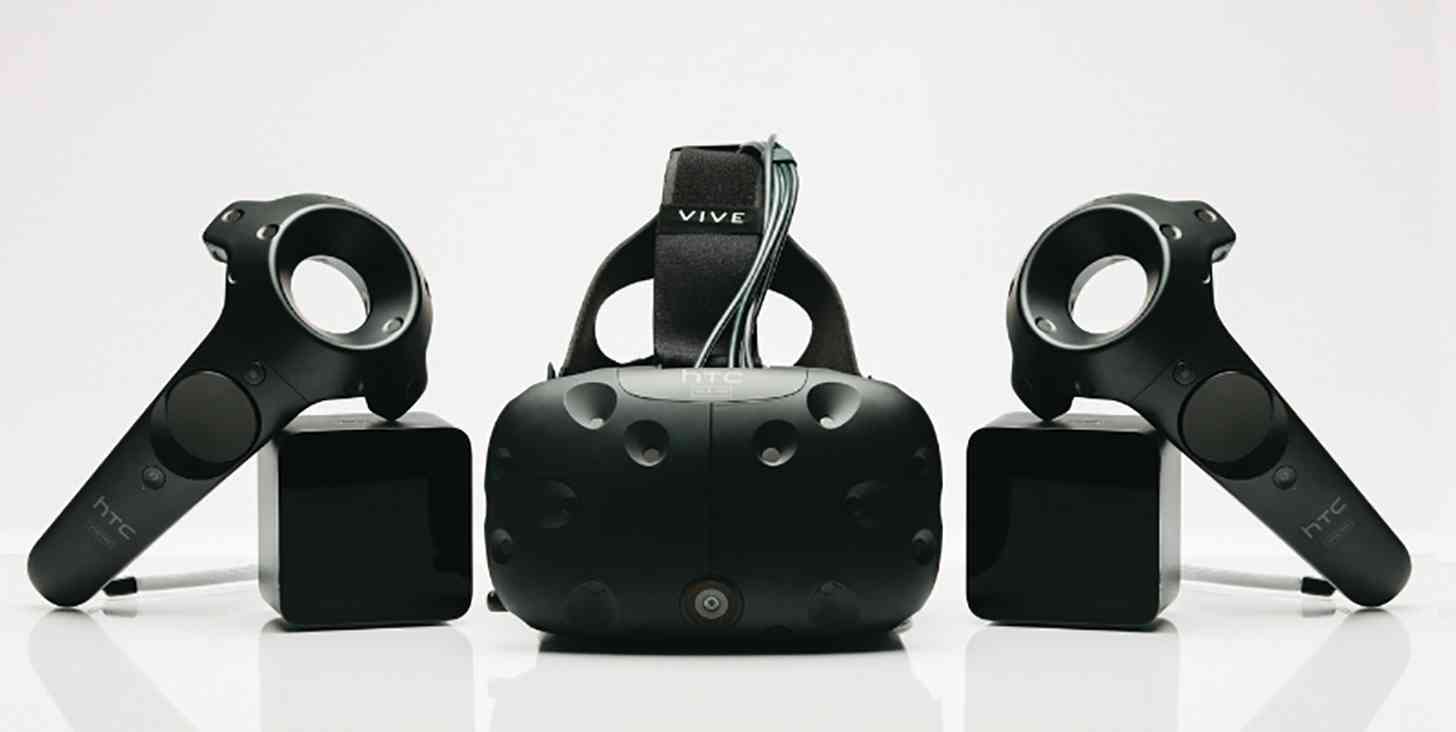
HTC may primarily be known as a smartphone company, but you wouldn’t know that from its announcements today. After revealing the fitness-focused UA HealthBox, HTC has announced a new version of its Vive virtual reality headset.
The HTC Vive Pre is the newest developer version of HTC’s VR headset, and perhaps its biggest new feature is a camera on the front of the unit that works in conjunction with the Vive Pre’s Chaperone system. The two work together to make sure that you don’t bump into a wall, couch, or other object while you’re in the VR world. Whenever you double-tap on the Vive controller’s menu button or simply come near an object in the real world, the Vive Pre will overlay of the real world into your visor.
The Vive Pre unit has also been slimmed down from the original Vive and includes and updated strap design that’ll give the wearer more stability. To make the device even more comfortable, the Vive Pre includes interchangeable foam inserts and nose gaskets to help them better fit your face. And the screens inside the Vive Pre have been updated to be brighter and clearer.
The Vive controllers have gotten a refresh with the Vive Pre, too. The new controllers are now made with a better build quality and ergonomics so that they’ll feel better in your hands. They’ll also be better to use thanks to new dual-stage triggers, textured buttons, and improved battery life that’ll help them last around four hours on a single charge. The controllers can be recharged over microUSB.
It’s worth mentioning that the Vive Pre is still a developer unit, but HTC says that it looks similar to the design of the final consumer version. The HTC Vive will launch to the public in April for an unspecified price.
The Vive Pre looks like a solid improvement over the original Vive. The design looks much nicer now that you can’t see all of the tracking bits on the front, and the improved strap design and interchangeable gaskets should help the unit fit well on most peoples’ faces. With competitors like the Samsung Gear VR, the upcoming Oculus Rift, and the HTC Vive, the virtual reality space is definitely going to be competitive in 2016. HTC and Valve seem like they’re doing well with their partnership, though, and it’s going to be interesting to see how the Vive stacks up to devices like the Rift when they become available to consumers later this year.